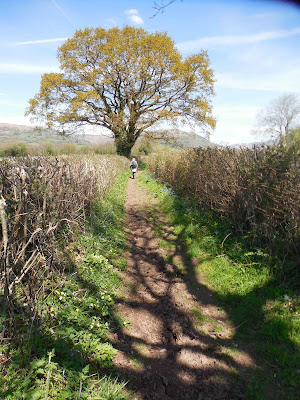White Bryony was making it's way up the hedges rapidly aided by its spring-like tendrils.
White Bryony,
Bloneg y ddaear
or
Bryonia dioica
We saw some later in an obviously very severely cut down hedge that was reaching into the air looking for former high supports - together with similarly expectant Honeysuckle.
Near Hay was a lovely field (mainly) of the third most common of our buttercups, easily recognised when you know how by the turned back sepals:
Bulbous Buttercup,
Blodyn-ymenyn bondew
or
Ranunculus bulbosus
Quite near Hay we found a little population of Early Dog-violet on the slope above the Dulas Brook - flowering rather late I think in this delayed 2016 spring.
Early Dog-violet,
or
Viola reichenbachiana
(Photographed in April at Craig y Cilau)
(Photographed in April at Craig y Cilau)
Higher up we found Changing Forget-me-not among the rich collection of species in the meadows.
Changing Forget-me-not,
Sgorpionllys amryliw
or
Myosotis discolor
(This picture also not from last week)
And later on this non-native but charming Speedwell.
Slender Speedwell,
or
Veronica filiformis
Sue took this as I was recording Wood Melick in a lane:
Wood Melick,
Meligwellt y coed
or
Melica uniflora
-----------------------------------------------------------------------------------------------------------Earlier in the week at Pwyll y Wrach I took this picture:
Bog Stitchwort, Serenllys y gors
or
Stellaria alsine. Was known as Stellaria uliginosa











